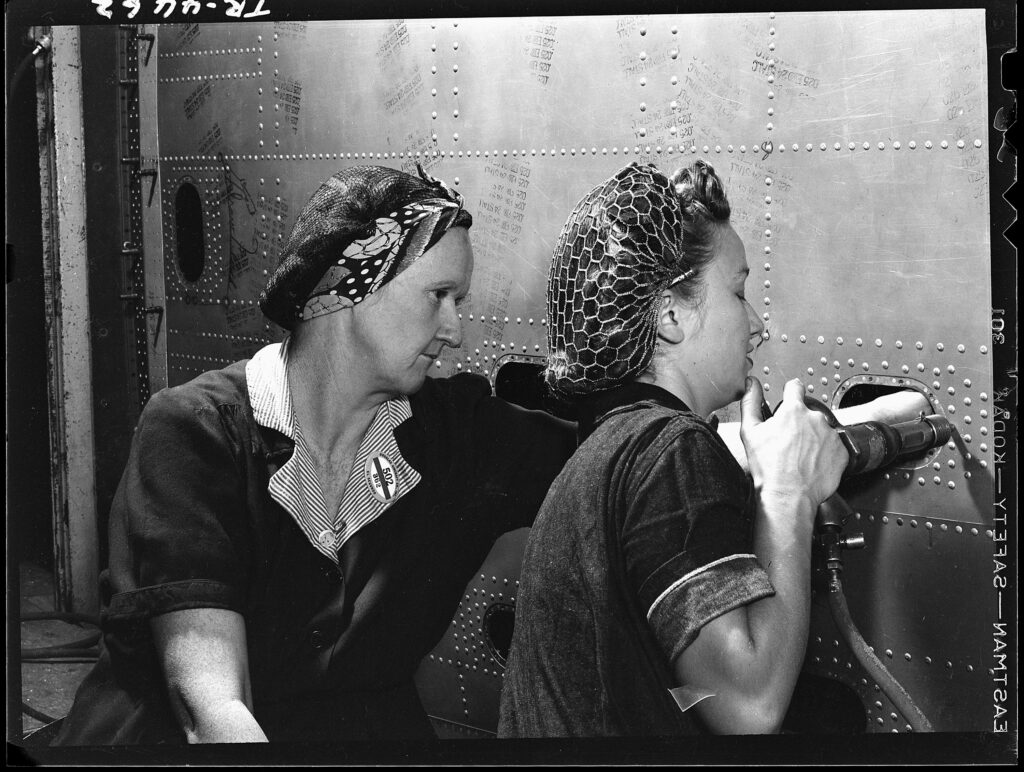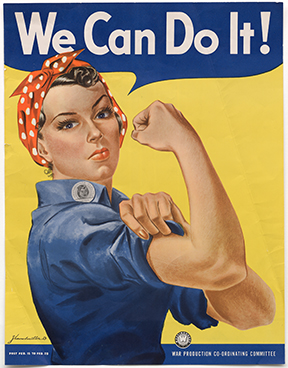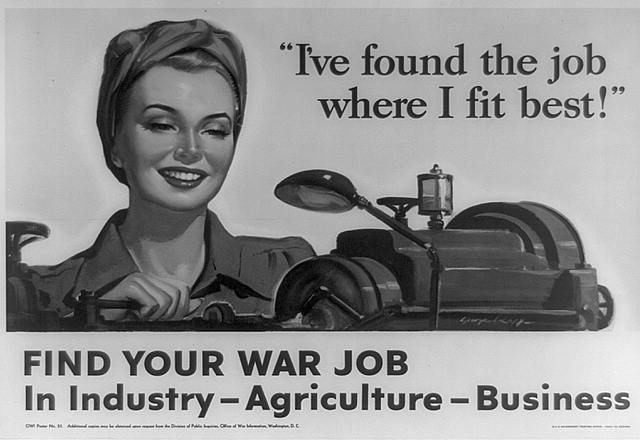Rosie’s Save The Day … Examining Women During WWII
Topics: US History, Women, Thinking Skills, Research
Audience: AP US History, College US History Students
Goal: To help students “think like a historian” and what it means to approach history through the lens of primary documents now made available with the addition of technology.
Reflection: Adding primary sources benefits the analysis of these visual communication assets. This hands-on, empathetic approach to history helps the students connect the past to the present.
Feedback
“This is such a great lesson plan, Danielle. I like history and, in particular, this period. I really enjoyed reviewing it. Your three objectives are written well and are supported within the lesson based on the materials provided and the activity. Nice job citing your sources and providing the links. I like how you start the lesson by approaching history through the lens of a historian – thinking Like a Historian. Great work getting the students involved with a Think, Pair, Share to answer the three questions you posed.
Next, your visual analysis activity using the images and six perspectives is great because it allows students to have a voice and share their thinking. I like how you integrate the short video to discuss many of your questions – focus, reliability, audience, the portrayal of women, etc. Love the letter activity for students to write a letter sharing with their families their experiences. Nice job on completing your lesson critique. Thanks for sharing!“
M. Lynn, Instructor
Lesson Overview
Assignment Instructions
Develop a lesson design involving digital video as content. Use at least one short video clip in the lesson.
Critique the instructional principles applied to your lesson.
Lesson Objectives
Students should …
- Use primary source documents (photographs, newsreels, posters, oral histories) to understand how demands on women changed during wartime.
- Examine visual cues in photos and posters for possible propaganda or persuasion tools at work.
- Demonstrate comprehension and practical research skills in their development of a letter from the perspective of a Rosie.
Evaluation Overview
Evaluation / Assessment: The descriptiveness of letter home, accuracy of references, historical context
Tips for Other Teachers Using This Lesson:
This lesson could be broken into centers or segments to encourage individual learning opportunities.
For materials, resources and reference list download the lesson.
Lesson Critique – Did the lesson meet the principles?
Write learning outcomes/objectives that are specific, focused, and achievable. Yes, the objectives are specific and achievable.
Use short video clips (The optimal length is less than 2 minutes) to address each learning outcome. Segment or edit the video if necessary. Only use part of the program for teaching. Yes, the clip used in class is a primary document that is 1:37
Use multi-sensory media content: Use multiple video clips or other multimedia content (photos, PowerPoint, web pages, text, audio, etc.) or other reading resources (from the textbook, books, articles, etc.). The lesson utilizes photos, video clips, illustrated posters, and post-lesson reading resources.
Could you give students a personally meaningful objective or purpose for watching the video clip? For example: pose a challenge question, present a puzzle or problem to solve using the information presented in the video, and relate the learning objective or the video to the student’s personal experience or interest. The students must review primary documents with the lens of current expectations waived. The students should be able to express empathy as they prepare their “letter home.”
Ensure that including the digital video “adds value” to the lesson. Yes, the video adds value by allowing students to glimpse the time — fashion, attitude, perspective, and technology.
Lesson Design Highlights
Introduction
Instructor reviews what it means to approach history through the lens of a historian.
Establish What We Know
Discussion and Think Pair Share:
- What do we know about the roles of women before WWII? During WWII and after WWII?
- What effect did the Great Depression have on the American economy?
- What was the role of women in the pre-WWII economy?
- How were women’s roles impacted during WWII?
Visual Analysis
Using the six perspectives of visual analysis, compare and contrast 2 images.
- Students will analyze at least two images with a small group and then present observations to the class.
- Use perspectives to analyze images
- How do these images support or contradict what we discussed about women during WWII?
- Discuss similarities among the group discussions.


- Personal: Gut reaction, do you like it? Is it memorable? Based on what? What exactly do you notice? (go to your image inventory for ideas)What time
- Historical: When was the image made? (Time of Day? Time of year? Era?) What was going on historically at the time? Is there an element of the more you know, the more you see involved? Is there a specific style?
- Technical: How is it possible to see it, how was it produced, lighting, quality
- Ethical:(Which ones apply? Can be more than one) Golden rule (do not add to grief), hedonism (personal gain), golden mean (compromise), categorical imperative (rule followed), utilitarianism (greater good wins), the veil of ignorance (empathy)
- Cultural: Societal impact, symbols, current cultural values, metaphors
- Critical: Reasoned opinion, what do you think now, general conclusions, how has the study changed your opinion
Image Sources: https://catalog.archives.gov/id/520742 http://loc.gov/pictures/resource/fsac.1a34927/
Watch Women at Work WWII US Government. (2006). Women at work WWII 1943. Manpower. Retrieved November 4, 2021
Introduce the clip and challenge students to find examples of language and visuals considered outdated today.
Students watch the clip and then discuss:
- What did they see and hear?
- Who was featured?
- Film purpose and message
- Film source
- Film reliability
- How does this film support or contradict what we discussed about women during WWII?
Discuss: Propaganda and Persuasion: Present WWII recruiting materials
Discuss the portrayal of women in these pieces. Review the image and the text.


Students review and discuss:
- Are these posters propaganda or persuasion?
- Who is the audience?
Additional Images: https://www.archives.gov/exhibits/powers-of-persuasion? _ga=2.76484828.879456943.1636057368-1323077540.1636057367
Image Sources:
https://tile.loc.gov/storage-services/service/pnp/cph/3b40000/3b45000/3b45100/3b45153r.jpg
https://catalog.archives.gov/OpaAPI/media/535413/content/catalog-update/535413-179-WP-1563/05203_2010_001_AC.jpg
Reinforce Further Study Challenge: Read or watch an oral history of a “Rosie The Riveter.”
Pretend you are your research subject or a “Rosie,” and write a letter to your family about your experiences.
- What did you do during the war?
- Where did you work?
- What did you do there?
- What was it like?
- How did your work impact the war effort?
- When the war is over, what do you have planned?
Options:

What’s Next?
Let’s find a way to work together … Contact Me

